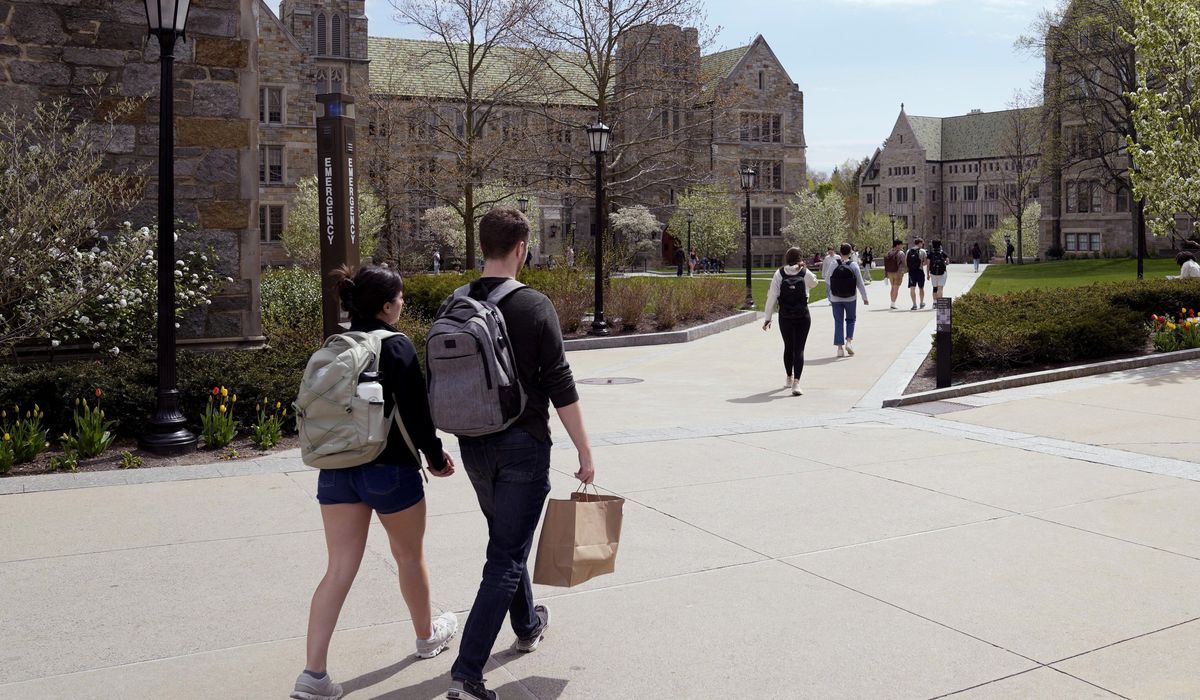


Declining numbers of dropouts have driven college completion rates to their best level in 12 years, the National Student Clearinghouse Research Center reported Wednesday.
The education organization found that 61.1% of learners who started college in the fall of 2018 finished a degree within a six-year window ending in 2024, up half a percentage point from those who began in 2017.
It’s the best completion rate since the center launched its annual analysis with students who began college in 2007, of which 53.7% earned a credential by 2013.
“Higher completion rates are welcome news for colleges and universities still struggling to regain enrollment levels from before the pandemic,” said Doug Shapiro, the center’s executive director. “Even as fewer students are starting college this fall, more of those who started back in 2018 have stayed enrolled through to the finish.”
The center chalked up the increase to a 0.4% decline in students dropping out and a 1.2% rise in students finishing two-year degrees at public community colleges.
According to higher education insiders not involved in the report, these numbers offer little comfort to small four-year colleges struggling with long-term revenue and tuition declines.
“That is to say, slightly more students who began a two-year college program in 2018 managed to finish it in six years,” said Peter Wood, president of the conservative National Association of Scholars and a former associate provost at private Boston University. “I wouldn’t say that is a resounding vote of confidence in higher education as a whole.”
The report found that full-time students from the fall 2018 cohort were “significantly more likely” to earn a degree, with 67.2% completing one by year six and only 25.4% stopping out.
In contrast, students who started as part-time scholars dropped out at a much higher rate of 52.4% and registered a lower completion rate of 33.7% by year six.
The report comes as preliminary figures show fewer 18-year-old high school graduates entered college this fall, reflecting a long-term decline in birth rates and a growing number of families with modest incomes shunning costly four-year programs.
In September, the Government Accountability Office reported that a three-month launch delay and technical glitches on the Free Application for Federal Student Aid website over the past year led to 432,000 fewer students applying for the 2024-25 term, a 3% decrease from the previous application cycle.
The report said a 9% drop in high school seniors and other first-time applicants led the way, with 325,000 fewer submitting applications for this fall as the Education Department ignored thousands of phone calls from worried parents. The largest decreases occurred among students from households with incomes between $30,000 and $48,000 a year.
Robert Heineman, a political scientist and a former department chair at Alfred University in New York, said the clearinghouse report confirms college leaders are working to address return-on-investment concerns among working-class families worried about finances.
“Colleges can see that there are going to be fewer students available for college and are making greater efforts to keep those that they have,” Mr. Heineman said. “Second, I believe that many schools are concentrating more directly on vocational kinds of programs that tie closely to job opportunities.”
• Sean Salai can be reached at ssalai@washingtontimes.com.
